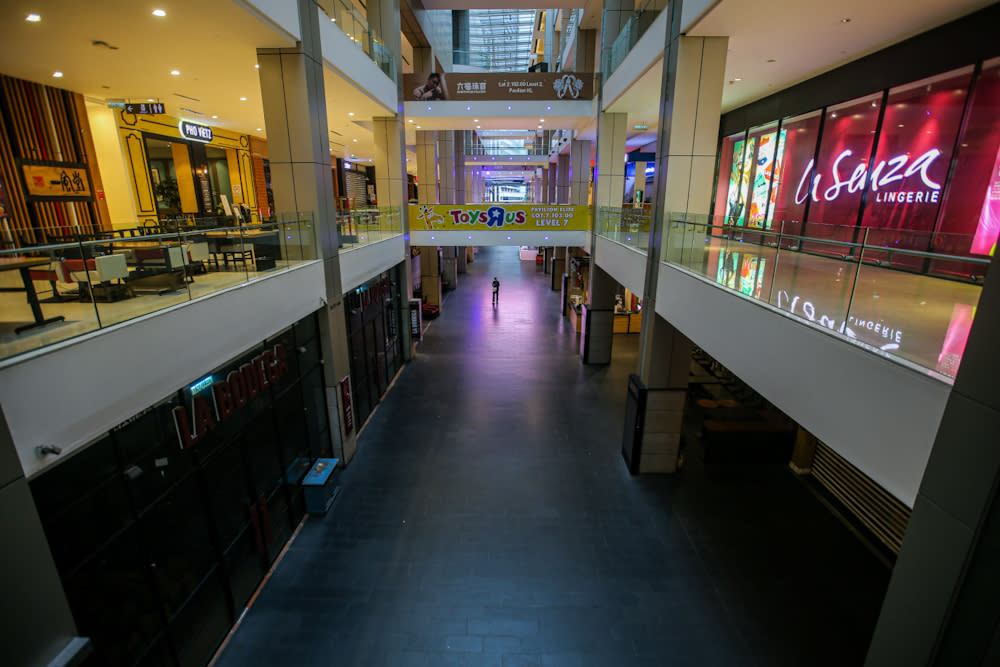Covid-19: Malaysian retail sector posts worst performance since 1987 global recession

KUALA LUMPUR, July 13 — The retail industry shrank by more than 11 per cent in the first quarter of this year in its worst performance since the 1987 global recession.
Retail sales grew at a negative 11.4 per cent compared to the same period last year albeit lower than the initial forecast of -18.8 per cent by April 2020, the Malaysia Retailers Association (MRA) noted in its July report.
“This year has been the worst period for retailers in Malaysia since 1987. The retail market turned into a bloodbath in the middle of March with the implementation of movement control order (MCO),” the group said.
The government imposed strict movement restrictions starting March 18 after daily cases of Covid-19 spiked towards the end of February, hitting businesses hard as the stay-at-home order prevented consumers from spending.
The MRA said retailers in sectors like tourism had already suffered from declining sales even before the MCO, as the virus’ rapid spread slowed down tourist figures even before the government closed the country’s borders.
Retail sales grew at a modest rate of 3.8 per cent in the fourth quarter of 2019, while private consumption grew at a much slower pace in the same period, at just 6.7 per cent.
Those badly affected were mostly non-essential retailers, the group noted.
“This partial lockdown in the last two weeks of March led to zero revenue for non-essential retailers in the whole country,” the report said.
The Consumer Sentiment Index within this period posted a record low of 51.1, the lowest since 1988, according to data by the Malaysian Institute of Economic Research.
Unemployment rate in the first quarter of 2020 climbed to 3.5 per cent, and by March it had risen to 3.9 per cent, the highest since June 2010.
Fashion and fashion accessories retailers topped the worst performers by sub-sectors, shrinking by a staggering -30.5 per cent, the MRA report found.
Department stores came in second at -17.5 per cent, while supermarkets posted a negative growth rate of 8.5 per cent compared to the same period last year, although the report said food and beverage businesses were spared the full impact of the partial lockdown.
The MRA attributed the sales decline primarily on lower tourist arrivals.
Sales at specialty stores, a sub-sector that includes retailers selling photographic equipment, optical products, children-related goods, second-hand goods, toys as well as arts and crafts, plunged -17.9 per cent as compared to the same period last year.
The MRA said its members expect the fallout effect of Covid-19 to stretch until next year.
The average sales forecast rate for the second quarter of 2020 was -28.8 per cent, worse than the MRA’s own April projection of -9.3 per cent.
Department store cum supermarket operators were again the most wary among respondents, with members projecting a negative sales growth of -40.9 per cent for the second quarter of this year.
“The department store operators are expecting the worst in their businesses with a growth rate of -62.8 per cent for the second three-month period of this year,” the report said.
“This sub-sector will be the worst performer among the retail sub-sectors during this quarter.”
Related Articles Research organisation says coronavirus masks, gloves polluting Europe’s rivers ‘Strong evidence’ mothers can transmit coronavirus to newborns, say scientists Hong Kong to impose most severe social distancing restrictions



